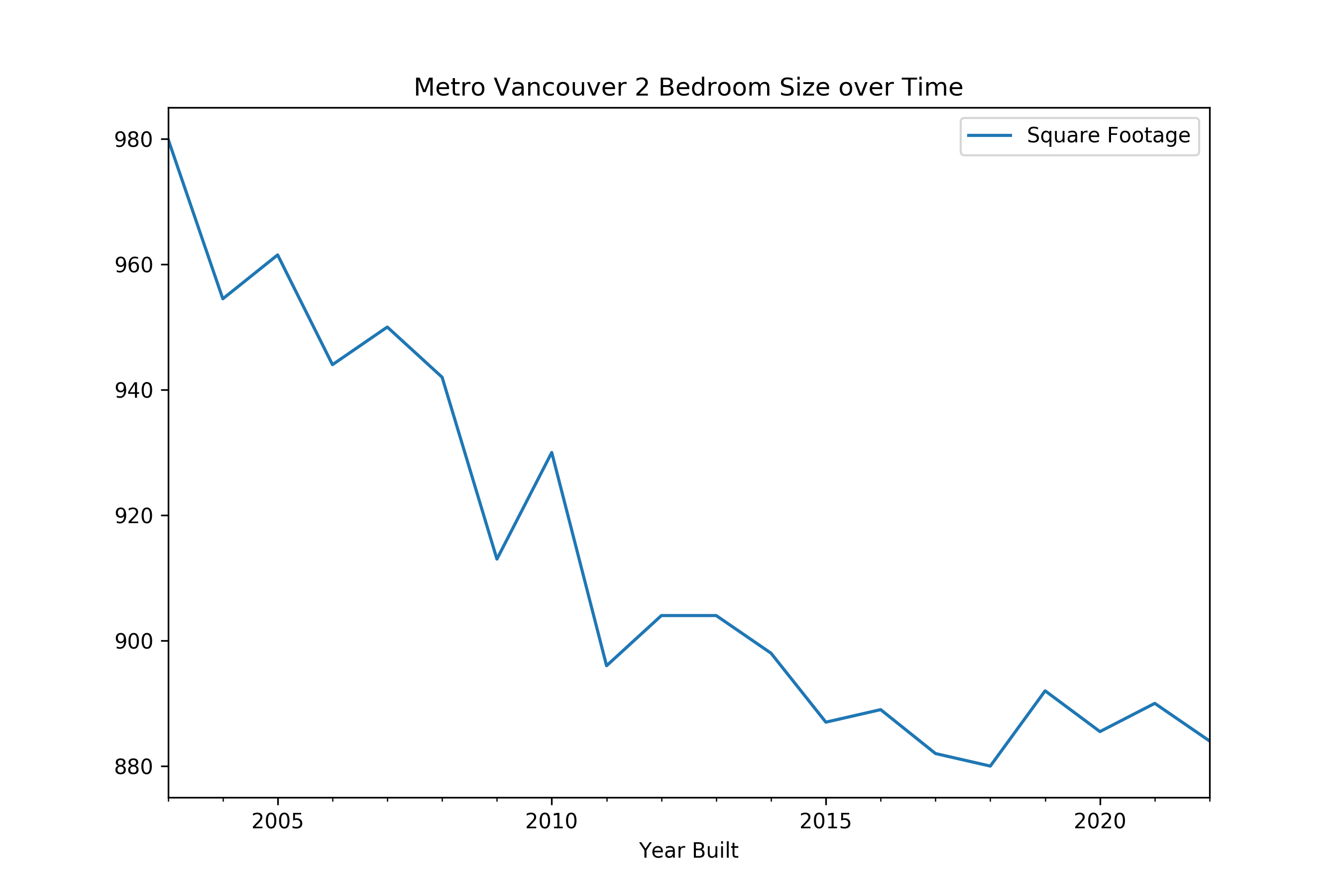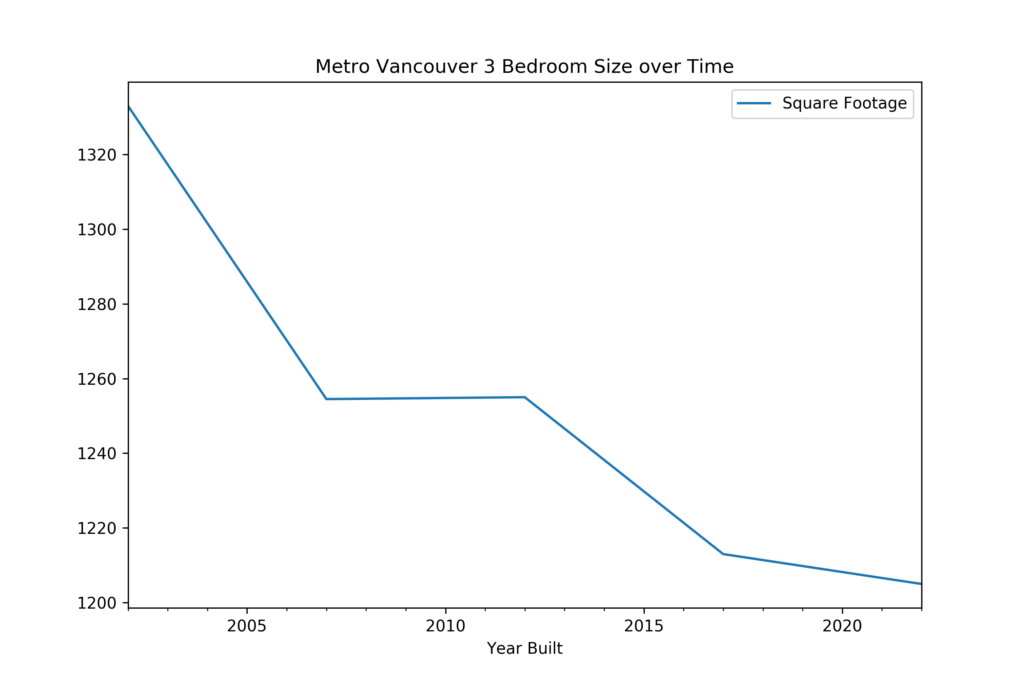
By Rohana Rezel
Vancouver’s real estate market is famous, or infamous, for its seemingly unstoppable rise in home prices over the last two decades. Metro Vancouver’s apartment prices have risen by a whopping 375% between 2002 and 2022.
While the prices of apartments are growing at breakneck speeds, the apartments themselves are shrinking. We analyzed the square footage of two bedroom apartments that were built during the same time frame. We found that the median square footage for a Metro Vancouver apartment has shrunk by 10% between 2002 and 2022.
In 2002, the median square footage of a two bedroom apartment in Metro Vancouver was 980 square feet. That number fell to just 880 square feet by 2018, and has remained flat since then.
We also analyzed the square footage of three bedroom apartments that were built during the same time frame. There wasn’t sufficient data in the period between 2009 and 2012 to obtain annual median values so we calculated the median in five-year periods instead.
The results were very similar to what we observed with 2 bedroom apartments. We found that the median square footage for a Metro Vancouver apartment has decreased by 9% in the 2017-2022 period compared to 1997-2002 period.
What we’re seeing with Metro Vancouver apartments is Shrinkflation, where a producer reduces the size of a product while charging the same prices, or, even more as in the case here.
One major reason for the shrinkflation may be that municipalities encourage smaller apartments arguing that they contribute to affordability.
For example, City of Vancouver introduced maximum unit size requirements for
rental projects requesting a development cost levy (DCL) waiver. To qualify for this subsidy, developers need to keep two-bedroom units smaller than 830 square feet, and three-bedroom units below 1,044 square feet.
“Maximum unit sizes can contribute to affordability, as larger units can be more expensive to rent compared to smaller units, not withstanding other factors, such as location, tightness of rental market, etc,” Vancouver City Manager Paul Mochrie argued in a memo to the Mayor and Council1.
Mochrie himself lives in a 2,150 square foot single family home with five bedrooms and 3.5 bathrooms.

This is word perfect. It riles me that renters pay more and more for less and less. As you noticed, the affordability argument doesn’t hold water.
It also riles me that a number of renters are pretty satisfied with the situation, somehow mashing together ideas of small living with small apartments. But the one-bedrooms of yore at 650-750 square feet were never environmentally unsustainable. The problem has always been single family dwellings like the one belonging to Vancouver City Manager Paul Mochrie.
Here in Nanaimo, the city has recognized in their Affordable Housing plan that smaller and smaller units become a burden on the city in that renters living in such places need more public amenities. They need to go to libraries, parks, galleries, restaurants, and so on because their homes are inordinately small.